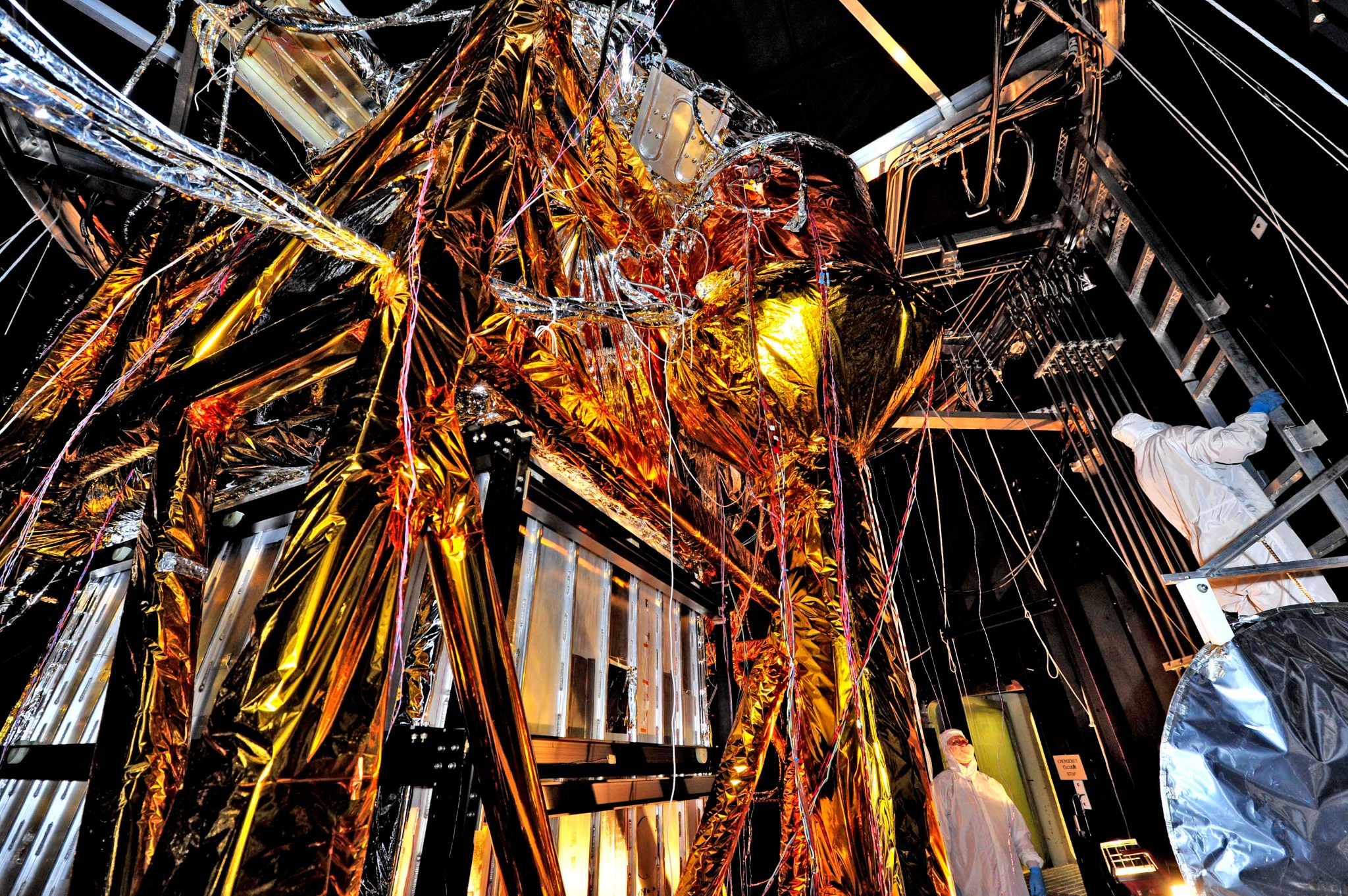What looks like a giant golden spider weaving a web of cables and cords, is actually ground support equipment, including the Optical Telescope Simulator (OSIM), for the James Webb Space Telescope. OSIM’s job is to generate a beam of light just like the one that the real telescope optics will feed into the actual flight instruments. Because the real flight instruments will be used to test the real flight telescope, their alignment and performance first have to be verified by using the OSIM. Engineers are thoroughly checking out OSIM now in preparation for using it to test the flight science instruments later.
This photo was taken from inside a large thermal-vacuum chamber called the Space Environment Simulator (SES), at NASA’s Goddard Space Flight Center in Greenbelt, Md. Engineers have blanketed the structure of the OSIM with special insulating material to help control its temperature while it goes into the deep freeze testing that mimics the chill of space that Webb will ultimately experience in its operational orbit over 1 million miles from Earth. The golden-colored thermal blankets are made of aluminized kapton, a polymer film that remains stable over a wide range of temperatures. The structure that looks like a silver and black cube underneath the “spider” is a set of cold panels that surround OSIM’s optics.
During testing, OSIM’s temperature will drop to 100 Kelvin (-280 F or -173 C) as liquid nitrogen flows through tubes welded to the chamber walls and through tubes along the silver panels surrounding OSIM’s optics. These cold panels will keep the OSIM optics very cold, but the parts covered by the aluminized kapton blankets will stay warm.
“Some blankets have silver facing out and gold facing in, or inverted, or silver on both sides, etc.,” says Erin Wilson, a Goddard engineer. “Depending on which side of the blanket your hardware is looking at, the blankets can help it get colder or stay warmer, in an environmental test.”
Another reason for thermal blankets is to shield the cold OSIM optics from unwanted stray infrared light. When the OSIM is pointing its calibrated light beam at Webb’s science instruments, engineers don’t want any stray infrared light, such as “warm photons” from warm structures, leaking into the instruments’ field of view. Too much of this stray light would raise the background too much for the instruments to “see” light from the OSIM-it would be like trying to photograph a lightning bug flying in front of car headlights.
To get OSIM’s optics cold, the inside of the chamber has to get cold, and to do that, all the air has to be pumped out to create a vacuum. Then liquid nitrogen has to be run though the plumbing along the inner walls of the chamber. Wilson notes that’s why the blankets have to have vents in them: “That way, the air between all the layers can be evacuated as the chamber pressure drops, otherwise the blankets could pop,” says Wilson.
The most powerful space telescope ever built, Webb is the successor to NASA’s Hubble Space Telescope. Webb’s four instruments will reveal how the universe evolved from the Big Bang to the formation of our solar system. Webb is a joint project of NASA, the European Space Agency and the Canadian Space Agency.
Related Links:
› James Webb Space Telescope website






























